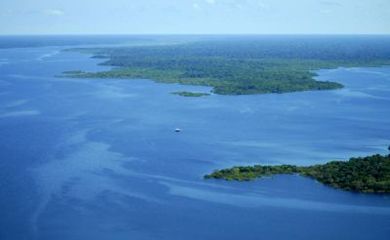World Cup greenhouse gas emissions estimated at 1.4 tons




Measures drawn up to compensate for these carbon dioxide emissions were presented Tuesday (May 17), as part of a series of sustainable actions for the World Cup by Environment Minister Izabella Teixeira, with the help of Aldo Rebelo, Vinícius Lages, and Tereza Campello, the ministers of Sports, Tourism and Social Development, respectively.-
The amount of carbon dioxide, the primary greenhouse gas, to be emitted during the 2014 FIFA World Cup in Brazil is expected to total 1.4 million tons. The estimate was given by Brazil’s Environment Ministry, which devised a special methodology for this forecast.
Measures drawn up to compensate for these carbon dioxide emissions were presented Tuesday (May 17), as part of a series of sustainable actions for the World Cup, by Environment Minister Izabella Teixeira, with the help of Aldo Rebelo, Vinícius Lages, and Tereza Campello, the ministers of Sports, Tourism and Social Development, respectively.
One of the strategies to help the government estimate the volume of indirect emissions – i.e., those from international air transport in and out of the host cities – is the so-called Green Passport initiative, recently expanded. This project, in collaboration with the United Nations Environment Program (UNEP), aims to provide tourists with sustainable options through a communication platform that includes a web portal and a number of applications.According to Izabella Teixeira, the direct emissions, which amount to over 60 thousand tons, have already been offset through the donation of carbon credits by the companies. “The direct emissions of the World Cup are a hundred percent compensated for. [The direct emissions] are those that stem from hosting [the event], and from infrastructure and mobility works,” Teixeira said.

The Organic and Sustainable Brazil campaign, which will distribute food kits to volunteers and build in the host cities kiosks selling organic products and items from family agriculture.
Apart from the compensation of the emissions and the expansion of the Green Passport, ministers announced public policies in the management of solid waste, with the incorporation of waste sorting, recyclable garbage collectors in the initiatives and the Organic and Sustainable Brazil campaign, which will distribute food kits to volunteers and build in the host cities kiosks selling organic products and items from family agriculture.
Izabella Teixeira pointed out that all the stadiums will have the Leed seal (Leadership in Energy and Environmental Design). The arenas Castelão, in Fortaleza, and Fonte Nova, in Salvador, have already been given international recognition. Six other stadiums (in Manaus, Brasília, Belo Horizonte, Curitiba, Rio de Janeiro and Recife) are expected to have their seals delivered by the beginning of the international competition, and the remaining four (in Cuiabá, Porto Alegre, São Paulo and Natal) by the end of 2014.
Translated by Fabrício Ferreira
Fonte: World Cup greenhouse gas emissions estimated at 1.4 tons




